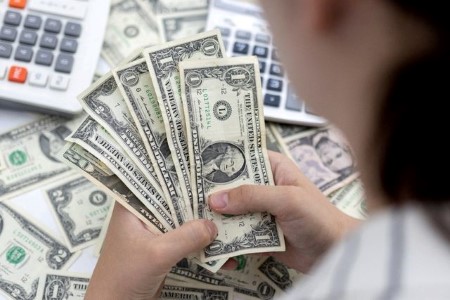




Quarterly Economic Growth Release: More BSP cuts to come
 DOWNLOAD
DOWNLOAD

Monthly Economic Update: Fed catches up
 DOWNLOAD
DOWNLOAD

Inflation Update: Steady and mellow
 DOWNLOAD
DOWNLOAD


Dollar buoyed by safe-haven bids, rate jitters

SINGAPORE, Oct 16 – The dollar was on the front foot on Monday in cautious trade as tensions in the Middle East escalated, while investors awaited a speech by Federal Reserve Chair Jerome Powell later this week for further clues on the US central bank’s rate outlook.
The Israeli shekel fell to more than an eight-year low of 3.9900 per dollar in early Asia trade, after the country’s Prime Minister Benjamin Netanyahu vowed on Sunday to “demolish Hamas” as his troops prepared to move into the Gaza Strip in pursuit of Hamas militants.
Carry trades funded by the yen could be the biggest casualty of further escalation in the war, analysts said, as global investors who have for months been shorting the yen to invest in higher-yielding currencies buy it back as a safe haven.
The yen was last steady at 149.53 per dollar.
The Japanese currency, which is near potential intervention levels around 150, could also rally if the Fed has to stop hiking rates even as the Bank of Japan feels compelled by domestic inflation to tighten policy.
The BOJ has continued to maintain its ultra-easy policy settings although markets are rife with speculation that it could move to gradually exit from the accommodative stance sooner rather than later.
“Obviously war is inflationary, disrupts growth, and threatens risk assets,” James Malcolm, head of FX strategy at UBS in London.
“The largest overhang I can see in this regard is dollar-yen, where the BOJ must pivot regardless and the carry trade that has built up now amounts to nearly half a trillion dollars.”
Elsewhere, the safe-haven dollar stood near a one-week high against a basket of currencies as risk sentiment remained fragile, pinning the euro near a one-week low hit on Friday.
The single currency was last 0.11% higher at USD 1.0522.
Sterling gained 0.06% to USD 1.21515, though it was similarly languishing near Friday’s one-week trough of USD 1.2123.
“I view what’s going on in Israel as a regional conflict, which typically does not have meaningful impacts on financial markets over time,” said David Chao, Invesco’s global market strategist for Asia Pacific ex-Japan.
“I don’t see it altering growth trajectories of the major economies nor does it make the Fed more hawkish. If anything, I think the Fed is less inclined to tighten going forward given the perception of heightened risks.”
The Australian dollar, often used as a proxy for risk appetite, gained 0.19% to USD 0.6309, after sliding 1.4% last week.
On the policy front, traders looked to Fed Chair Powell’s speech before the Economic Club of New York later this week for clues on how much further US interest rates could rise, after data last week showed consumer prices increased more than expected in September.
Markets are largely expecting the Fed to keep rates on hold when it announces its next monetary policy decision in November, according to the CME FedWatch tool, though they see a roughly 32% chance the central bank could deliver a rate hike in December.
In other currencies, the New Zealand dollar gained 0.33% to USD 0.5904.
New Zealand’s center-right National Party led by Christopher Luxon will form a new government with its preferred coalition party ACT, as Prime Minister Chris Hipkins conceded his Labor Party could not form a government after Saturday’s general election.
“The kiwi dollar jumped this morning following a clear and decisive victory of New Zealand’s opposition National Party,” said Kyle Rodda, senior financial market analyst at Capital.com.
“It appears the Nationals are in the position to win power while only requiring one coalition partner, excluding the populist New Zealand First party.
“The kiwi has jumped on the prospect such dysfunction has been avoided.”
(Reporting by Rae Wee and Vidya Ranganathan; Editing by Shri Navaratnam)
This article originally appeared on reuters.com





 By Reuters
By Reuters